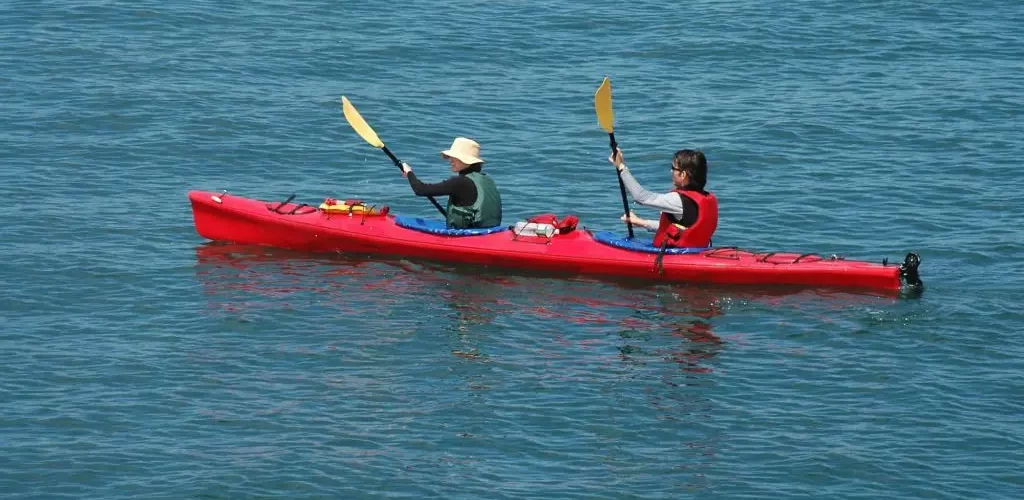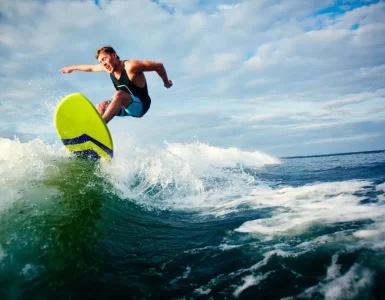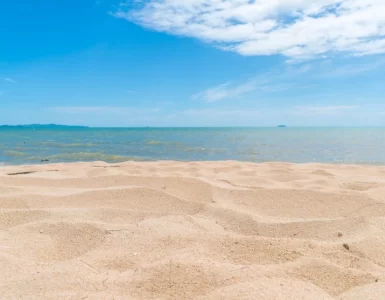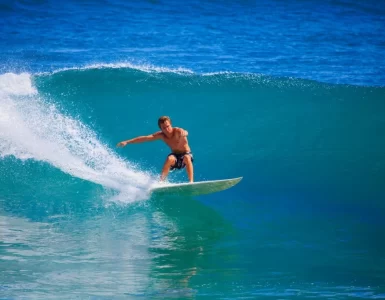Kayaks have been a major part of people’s lives since they first came into existence hundreds or even thousands of years ago. In fact, the word “kayak” loosely translates to ‘hunter’s boat’, and it’s an apt translation seeing as kayaks were often used for hunting and is a great watercraft to approach prey silently.
Kayaking has also been recognized as a sport in the Olympics, although much of kayaks’ use today are largely similar to what they were before- fishing. Again, this is primarily because kayaks are incredibly stealthy on water, especially as compared to other types of watercraft.
Due to the wide range of applications and high demand from paddlers all over the world, kayak manufacturers have continuously strived to innovate the design, build, and functionality of the kayak. One of the latest and probably best innovations to date are tandem pedal kayaks, which have quickly become a crowd favorite. Here’s why:
Types of Kayaks
First thing first: let’s talk about all the different kinds of kayaks, each of which come with distinct structures, identifying features, and intended purpose. This way, you can better understand what is a tandem kayak, pedal kayak, and tandem pedal kayak.
The most common kayak types are the following:
According to Use
- Recreational kayaks- versatile kayaks that are used by beginners and casual paddlers for various kayaking activities
- Fishing kayaks- designed for silently and efficiently maneuvering through tricky fishing spots; used by kayak fishers in rivers, lakes, and even open waters
- Whitewater kayaks- durable and virtually indestructible kayaks made to withstand abuse; used for adventure seekers on whitewater rapids
- Sea/ ocean kayaks- also called touring kayaks, these are known for excellent tracking, high cruising speeds, long distance comfort, and high cargo capacity
Want a great fishing kayak? Check out the Perception Sound 9.5
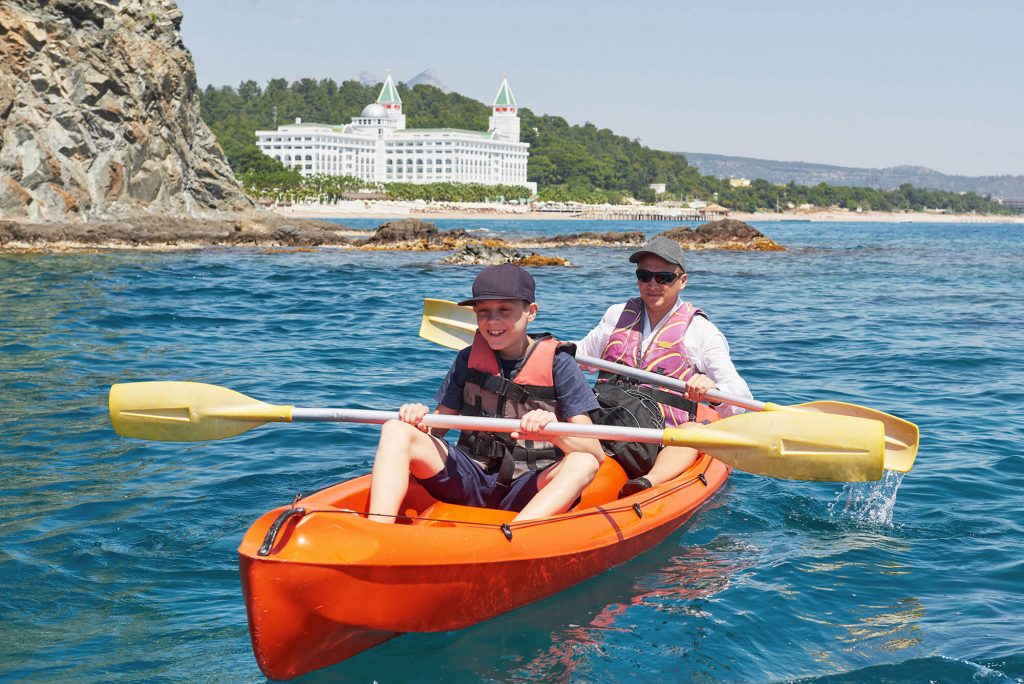
According to Construction
- Hard packed kayaks- solid, sturdy, and durable kayaks made from strong plastics and/ or composites like fiberglass, often with metal or carbon fiber reinforcements
- Inflatable kayaks- portable and collapsible air-filled kayaks made with malleable plastics and other similar materials molded into various kayak parts and air chambers
- Sit on top kayaks– open kayaks with hollow hulls and seating above the kayak, where the kayaker is exposed to the elements
- Sit inside kayaks- kayaks with enclosed hulls where the seat is located inside the kayak so that the kayaker is better protected against splashes and such
According to Propulsion
- Paddle kayaks- traditionally/ conventionally designed kayaks that are propelled forward with the use of paddles; requires use of the kayaker’s arms and upper body strength
- Pedal kayaks- alternative design featuring bicycle style pedals inside the cockpit; requires the use of the kayaker’s legs and feet to pedal the kayak forward
- Motorized kayaks- battery powered kayaks that make use of trolling, electric, or gas motors to move the kayak forward
According to Number of Kayakers
- Solo kayaks- typical one or single person kayaks intended to fit a solo kayaker and enough cargo for one person
- Tandem kayaks- larger kayaks with two seats for two kayakers and more storage space to accommodate the extra cargo needs
As you can see, tandem pedal kayaks
What can you do with a tandem pedal kayak?
Since tandem pedal kayaks are designed in such a way that you’re supposed to use your feet to propel the watercraft forward, it leaves your hands free to do a bunch of other things while you’re on the watercraft.
Exploring
There are a few kayak types that enable you to explore shallow waters, complicated spots, and narrow inlets or outlets, but the best ones are pedal kayaks. Think of it this way- with a paddle kayak, you still need ample space on the sides for paddling, but with a pedal kayak, you can fit in tight spots as narrow as the kayak itself.
That said, traversing these spots can still be difficult and even downright dangerous, not to mention lonely if the narrow waterways only allow for the passage of one kayak at a time. As such, tandem pedal kayaks are the best option so you can enjoy the extra help and company as you explore the great outdoors.
Fishing
In theory, you can use just about any type of kayak for fishing. They are all watercrafts, they’re all silent, and they can all move decently on water. But, some kayak types are more suited for fishing than others.
Pedal kayaks, for one, are more silent and stealthy, since they don’t require the use of paddles that make lots of noise as they splash against the water. The best tandem kayaks, like the BKC PK14 14′, are also incredibly stable (a must for kayak fishing) since they can’t overturn or capsize while two people are trying to sit on/ in the kayak.
Family Bonding
Tandem pedal kayaks are great for spending quality time with a friend or family member for several reasons. One, the kayak itself allows for two people to kayak together, or even three if you want to include a child or kayak with your dog.
This way, you’re not spending money on two kayaks, and you can focus on enjoying each other’s company rather than each person struggling to pedal or paddle forward. Two, pedal kayaks are less exhausting than paddle kayaks, which means you’ll have more energy to bond with your fellow kayaker on-board.
Sea Kayaking
Again, since pedal kayaks make use of your legs rather than your arms, you can actually deliver more power with less effort to move the kayak along the water. This powerful drive gives you more momentum and speed, which are both important in the open waters. In fact, even if you momentarily stop pedaling, the dynamics of your rudder and flippers keep the kayak going.
Tandem pedal kayaks also come with several other essential features that make them ideal for ocean kayaking, including durable build, heightened stability, and increased storage space. Basically, when you take a tandem foot pedal kayak out on the sea, you’ll be able to reach high speeds, go far, and all without feeling too drained.
Racing
As pedal kayaks are much faster than the standard paddle kayak, and especially a canoe, they are the best watercrafts for racing, where kayakers can reach top speeds of up to 5 or 6 miles per hour. It’s a fun, exciting, and challenging water sport that lets kayakers test the limit of their watercraft as well as their physical abilities.
Where can you use a tandem pedal kayak?
Tandem pedal kayaks are great for many different purposes, but their best use is on large, deep, open bodies of water such as wide rivers, lakes, and seas.
Large Bodies of Water
Since you’re using pedals to propel the boat forward, you can move fast and cover large distances, which means small ponds are a no-go. Whereas, on open waters, you get to spend more time enjoying nature and doing other activities like kayak fishing or nature photography.
Choppy Waters and Strong Winds
A typical tandem fishing kayak with pedals is big and wide, and therefore a lot more stable than standard kayaks. This allows kayakers to venture out on choppier waters with larger waves and stronger winds without worrying about capsizing.
Clean and Deep Waters
One thing to keep in mind is that a pedal kayak is being propelled from underneath rather than from the sides, so you need to account for ample clearance between the hull of the kayak and the floor of the river, lake, or sea. You definitely don’t want to wade through weeds and have the pedals get tangled around the pedals.
For up-to-date forecasts, fishing reports, and more, visit Coastalanglermag.com
Are tandem pedal kayaks expensive?
It really depends on how you define “expensive”. That said, tandem pedal kayaks are among the priciest kayak styles on the market, mainly since they come with the most complex structures and sophisticated designs.
You’ll see tandem foot pedal kayaks starting at upwards of $,1000, often reaching beyond $2,000. To give you a better perspective, that’s the same cost of a high-end bicycle or a mid-range laptop.
In comparison with other kayaks, the cheapest ones are inflatable kayaks, starting at only $100, such as the Intex Explorer K2 Kayak. At the mid-range are your standard touring and recreational kayaks, which can go anywhere from $500 to $1,000 depending on build quality, brand name, and features.
Tandem Pedal Kayak vs Conventional Kayak
If you’re not yet convinced whether a tandem fishing kayak with pedals is the right choice for you, take a look at these differences between tandem pedal kayaks and regular kayaks.
Size and Weight
Both paddle and pedal kayaks average at around 12 feet in length for solo kayaks and 13 feet for tandem kayaks. When it comes to width, however, pedal kayaks are generally wider, with 35 inches being the average width of a pedal kayak, and a little less for standard paddle kayaks.
As for the weight, pedal kayaks are typically heavier than their paddle counterparts. Generally, pedal kayaks weigh at around 120 pounds, while paddle kayaks only weigh 80 pounds. This means that carrying pedal kayaks, especially tandem ones, from the parking lot to the waterfront is a bit more difficult and cumbersome. The same goes for loading the kayak onto your car rack.
Weight Capacity
Another factor when it comes to weight, which is, in a way, more important than the weight of the kayak per se, is its weight capacity, or how much total weight the kayak can safely carry, which amounts to the combined weight of the kayak itself, the people on board, and all the cargo stored in or on the watercraft.
On average, solo kayaks have a 300 lb weight capacity, with fishing kayaks offering a bit more breathing room for all those extra fishing gear and supplies. Tandem kayaks naturally come with a higher weight capacity since two people plus cargo will be aboard the watercraft, so the limit is usually at 500 lbs or higher.
Ease of Use
By the nature of the propulsion system of the kayak alone, a pedal kayak is significantly easier to use for a beginner kayaker with little to no experience in kayaking and other related watersports. In fact, you don’t even have to know how to ride a bike to learn how to use the kayak pedals, since pedaling is a natural, intuitive action that’s similar to walking.
Of course, there are still quite a few things you need to learn, like balancing on a kayak, maneuvering and steering it around with hand-controlled levers, and so on, but all in all, it’s still easier than learning how to paddle, which comes with understanding the mechanics and rules of maneuverability, steering, and propulsion.
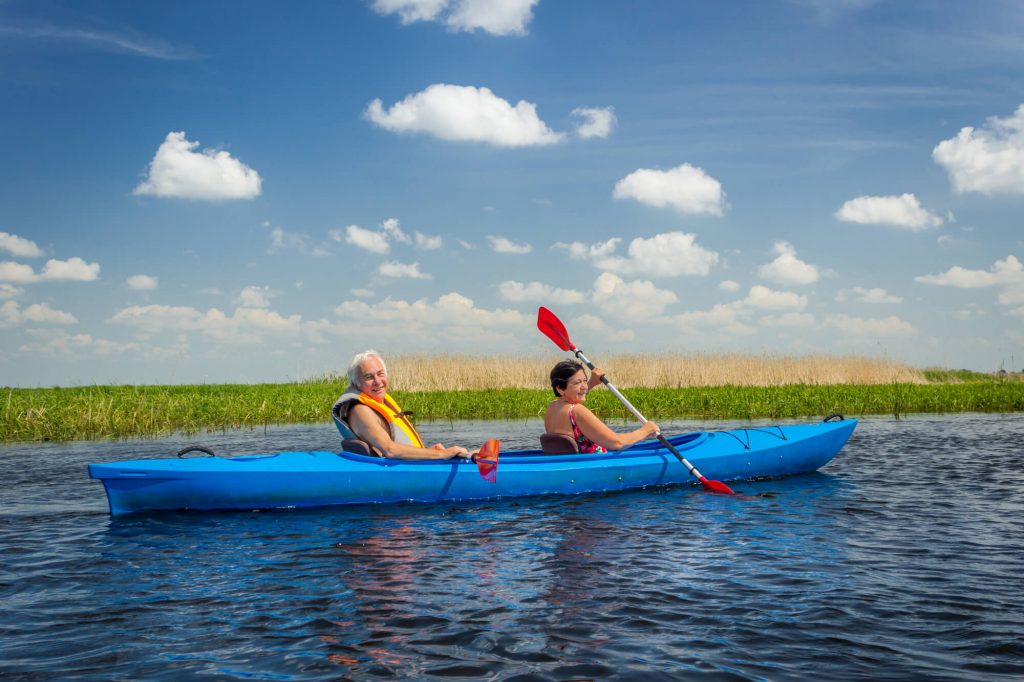
Propulsion
Speaking of propulsion, this right here is the main difference between pedal and paddle kayaks. You power a paddle kayak with your arms, while a pedal kayak is powered by a pedaling motion similar to walking or riding a bicycle. The key here is that your lower body- legs, thighs, and all that- are stronger and more powerful than your upper body, aka your arms, biceps, and torso.
In other words, by using your lower body, you can output more power, which translates to more powerful pedal strokes and faster pedaling, which results in a faster moving boat. Not only that, the easy pedaling movement and intuitive controls also contribute to a pedal kayak’s ease of propulsion.
Stability
One thing to understand in terms of stability when comparing pedal vs paddle kayaks is that it’s less about the width of the hull and the design of the kayak itself, and more about the propulsion system of the kayak.
This is because different kayak types come with widely varying designs and hull widths. For example, ocean and whitewater kayaks feature slim bodies that can take on waves laterally and frontally, whereas fishing and recreational kayaks come with wider hulls that are more stable in calm waters. All four of these different kayak types can either come with pedals or paddles.
So, a better way to look at the kayak’s stability is by comparing how the mode of propulsion affects the movement of the kayak. In this case, all paddle kayaks will somewhat shift the watercraft sideways, following the movements of the paddle, whereas pedaling remains steady throughout, since all movements are right underneath the kayak.
Versatility
Pedal kayaks leave your hands free to do various activities, save for the occasional direction control and steering that the kayak requires to maneuver the water. With a tandem pedal kayak, you get even more freedom, since you can alternate with your fellow kayaker in maneuvering and propelling the watercraft.
This opens you up to a host of possibilities, from photography to fishing, water sports, group activities, races, marathons, and various innovations and fun concepts.
Versatility also refers to where and how far you can go with the kayak, and when it comes to pedal kayaks, long explorations, offshore expeditions, and tricky adventures are all within your reach. On the contrary, conventional paddle kayaks will better get you through shallow waters, rocky waterbeds, and seaweeds.
Storage Space
When dealing with a small boat, storage should always be a priority, whether you are only going to be out on the water for a couple of hours, trying out kayak fishing, or going camping at the opposite end of the river. For instance, you need snacks and refreshments while you’re aboard the kayak. You also need some safety gear, maybe a change of clothes, and your valuables.
If you want to take pictures of your surroundings, you’ll need a dry hatch for your photography gear. And, if you’re going fishing, you’ll need to carry all sorts of things, including bait, rods, a fishing net, and a bucket or cooler for the fish you’ll be catching.
Now, paddle kayaks normally feature a sit-in arrangement, which means that your available storage space will be in front of and behind you. On the other hand, pedal kayaks have a different seat placement and hull design that leaves the middle section of the kayak free for extra storage space.
Price
Admittedly, pedal kayaks are more expensive than their paddle counterparts, and all the more so for tandem models. This is primarily due to the different design, build, construction, added features, and premium performance.
To be fair, there are also expensive paddle kayaks, such as high end touring and fishing kayaks, as well as most whitewater and sea kayaks. Still, however, even though pedal kayaks are pricier upfront, they pack more value per dollar spent, which makes for a worthwhile purchase.
Conclusion: Do you need a tandem pedal kayak?
It’s up to you! You need a tandem pedal kayak if…
- You are a beginner kayaker who wants an easy learning curve to get into the fun of kayaking quickly,
- You want to move fast on water, reach longer distances, and still have enough energy to get back to shore,
- You prefer larger, deeper, open waters with an extra layer of challenge and adventure as opposed to shallow, calm, and quiet ponds, lakes, and rivers, and/ or
- You want to enjoy doing various activities with a friend or family member, such as kayak fishing, exploration tours, racing, photography, and the like

